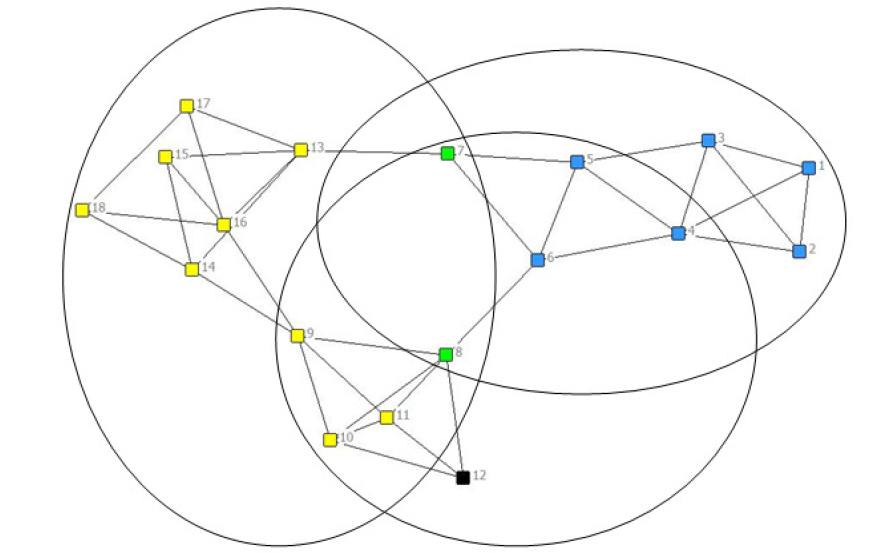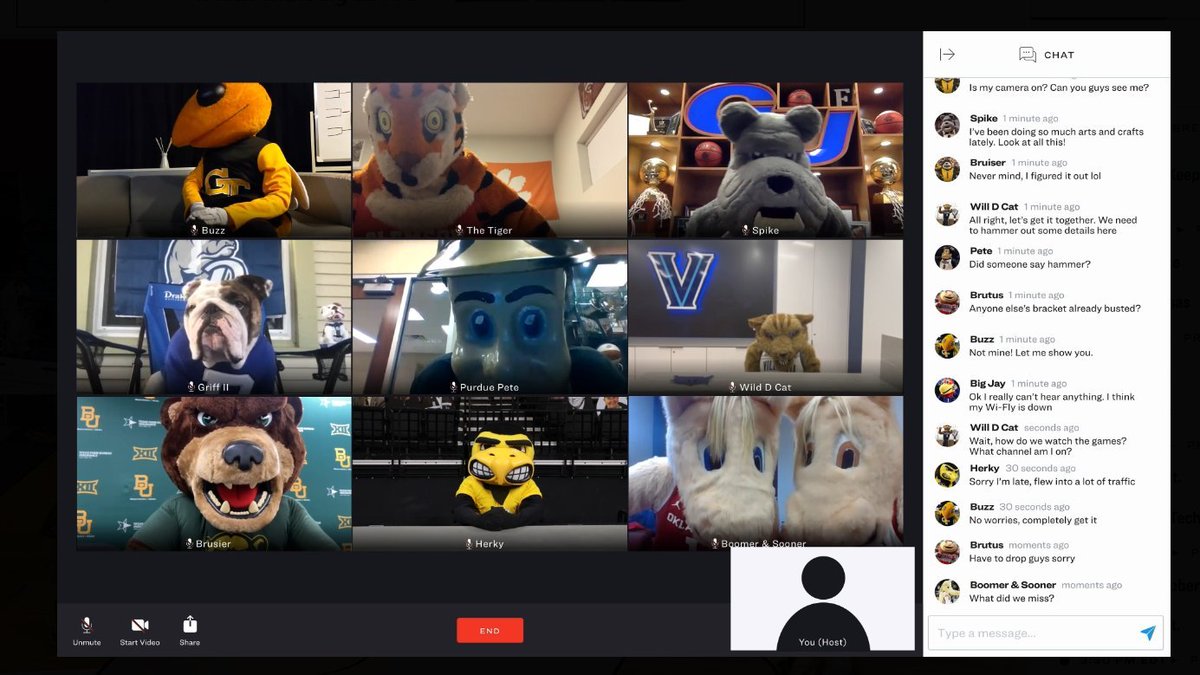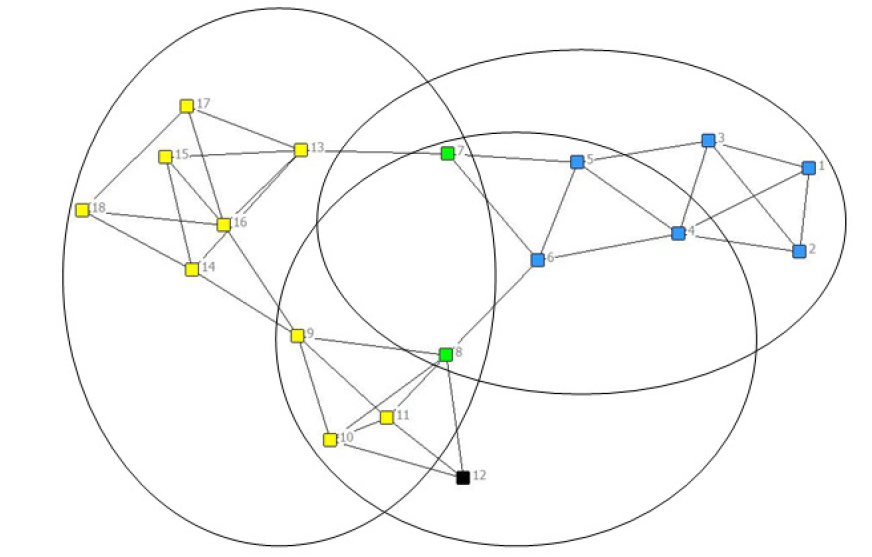It seems many people misunderstand what networks are or how they work.
As someone who just completed a dissertation using social network analysis, here& #39;s an explanation. May even make you a better networker, IDK!
Many people think that ‘networking’ means ‘trying to ingratiate yourself to a powerful person in hopes that they will do you a big favor.’
This is also called ‘ass kissing’ and it is NOT the most effective form of networking.
This is also called ‘ass kissing’ and it is NOT the most effective form of networking.
I& #39;ll be blunt: You, a grad student, are extremely unlikely to approach Israel Finkelstein at a conference reception, wow him with your brilliance, and magically transform this brief interaction into a postdoc at Tel Aviv the next year.
What exactly *is* a network, anyways?
A network is a cluster of three or more points called nodes, connected by paths. Nodes can be many things, but in social networks nodes are almost always people.
A network is a cluster of three or more points called nodes, connected by paths. Nodes can be many things, but in social networks nodes are almost always people.
Within networks, some groups people are more connected to each other than to the rest of the network. These are called ‘cliques’.
Here& #39;s a graph with the cliques highlighted by color:
(Source: https://www.google.com/url?sa=i&url=https%3A%2F%2Fcore.ac.uk%2Fdownload%2Fpdf%2F61419711.pdf&psig=AOvVaw2fC-TUKk8VtbS0XfAryr0q&ust=1618926531868000&source=images&cd=vfe&ved=0CA0QjhxqFwoTCJCo0OG6ivACFQAAAAAdAAAAABAD)">https://www.google.com/url...
Here& #39;s a graph with the cliques highlighted by color:
(Source: https://www.google.com/url?sa=i&url=https%3A%2F%2Fcore.ac.uk%2Fdownload%2Fpdf%2F61419711.pdf&psig=AOvVaw2fC-TUKk8VtbS0XfAryr0q&ust=1618926531868000&source=images&cd=vfe&ved=0CA0QjhxqFwoTCJCo0OG6ivACFQAAAAAdAAAAABAD)">https://www.google.com/url...
Social or professional cliques often form around a shared task or interest. For example, you and fellow graduate students from the same program who go to a conference together form a clique.
The disadvantage of cliques is that they are limiting – people in other cliques may have access to different knowledge or resources that will help you do whatever you are doing better.
The most powerful people in a network are those who can make connections between cliques.
The most powerful people in a network are those who can make connections between cliques.
Let& #39;s take another look at our graph. Who are the gateways?
Green #7 and #8 are the only actors who can connect the yellow and blue cliques.
People like Green #7 are the key to networking.
Green #7 and #8 are the only actors who can connect the yellow and blue cliques.
People like Green #7 are the key to networking.
In a classic 1973 paper "The Strength of Weak Ties," Mark Granovetter surveyed thousands of people about how they found their current job.
Surprisingly, he found that most of them didn& #39;t find a job through their friends.
https://www.jstor.org/stable/2776392 ">https://www.jstor.org/stable/27...
Surprisingly, he found that most of them didn& #39;t find a job through their friends.
https://www.jstor.org/stable/2776392 ">https://www.jstor.org/stable/27...
Our friends - that is, people in our cliques - usually can& #39;t connect us to resources we don& #39;t already know about.
The people who connect us are often those that we don& #39;t know very well.
Time for a real-life example:
The people who connect us are often those that we don& #39;t know very well.
Time for a real-life example:
At the last ASOR before the pandemic, I got to talk to @shana_zaia and learn about a lot of Neo-Babylonian research going on at the University of Vienna.
Shana and I had met before. We were introduced by a former student in my program. But we hadn& #39;t talked all that much.
Shana and I had met before. We were introduced by a former student in my program. But we hadn& #39;t talked all that much.
We were Granovetter& #39;s definition of a weak tie.
Anyways, a few months later I was puzzling over a certain Neo-Babylonian text, so I emailed Shana. She put me in touch with other people at Vienna working on similar texts, and I began collaborating with them.
Anyways, a few months later I was puzzling over a certain Neo-Babylonian text, so I emailed Shana. She put me in touch with other people at Vienna working on similar texts, and I began collaborating with them.
Is anyone I networked with a world-famous scholar? Not yet.
Is this networking going to get me a job? No.
Will it get me a publication? Maybe.
Many such networking opportunities are how you build a career.
Seek out people who are gateways between cliques.
Is this networking going to get me a job? No.
Will it get me a publication? Maybe.
Many such networking opportunities are how you build a career.
Seek out people who are gateways between cliques.
OK, so why can& #39;t this work online?
Unplanned social interactions.
The conversations where you meet gateway people are usually unplanned, and happen during coffee breaks, at receptions, at the hotel bar, or around the book fair tables.
Unplanned social interactions.
The conversations where you meet gateway people are usually unplanned, and happen during coffee breaks, at receptions, at the hotel bar, or around the book fair tables.
Zoom as a format doesn& #39;t have unplanned conversations because the focus is always on the person speaking.
People can& #39;t come and go. Side conversations require a & #39;breakout room& #39; and therefore are not spontaneous.
Awkward silences get REALLY awkward really fast.
People can& #39;t come and go. Side conversations require a & #39;breakout room& #39; and therefore are not spontaneous.
Awkward silences get REALLY awkward really fast.
Why is Zoom awkward? Because there is no escape. The camera is always on you.
Zoom is good for meeting to discuss a specific topic, and then ending. It& #39;s not a good medium for informal conversations because conversation doesn& #39;t ebb and flow like face-to-face human interaction.
Zoom is good for meeting to discuss a specific topic, and then ending. It& #39;s not a good medium for informal conversations because conversation doesn& #39;t ebb and flow like face-to-face human interaction.
Zoom also doesn& #39;t scale. Only small groups can have a conversation on Zoom. No more than 25 on screen at once. You can& #39;t have a Zoom room of 200-400 people with constantly shifting introductions and conversations. It& #39;s inevitably one person talking and the rest listening, or Q&A.
You can listen to papers on Zoom without missing too much from the conference experience. But networking - the really effective kind - is nearly impossible.
And networking is the real reason we have in-person conferences.
It& #39;s not a side benefit. Papers are the side benefit.
And networking is the real reason we have in-person conferences.
It& #39;s not a side benefit. Papers are the side benefit.
So, how to network better at conferences? Try to find out what other people need and think about who you can link them to. Talk about what you study and ask the people you talk to if they know people working on similar things.
Try and identify gateway people.
Try and identify gateway people.
And know that it might not pay off immediately.
It may take months or even years before you are working on some obscure topic, and you think "oh yeah, that guy I met at a conference that one time mentioned this, I& #39;ll ask them about it."
THE END
It may take months or even years before you are working on some obscure topic, and you think "oh yeah, that guy I met at a conference that one time mentioned this, I& #39;ll ask them about it."
THE END

 Read on Twitter
Read on Twitter






